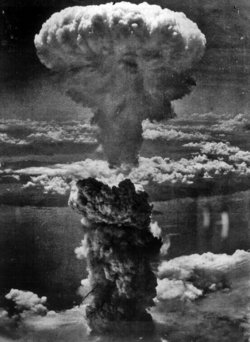By JOHN HEILPRIN, Associated Press Writer
Fri Dec 23, 3:58 AM ET
Over the past decade, the Environmental Protection Agency created health-risk scores to identify communities with potential hazards from industrial air pollution. But many local leaders were in the dark.
"It caught me completely by surprise, which shouldn't be for a mayor," George Heartwell, the mayor of Grand Rapids, Mich., said after The Associated Press reported on the EPA health-risk scores.
In a story last week, the AP mapped those scores to neighborhoods in a computer analysis that found the risks from industrial air pollution disproportionately affect minorities and the poor.
The story has stirred controversy and intrigue in communities across America.
In Grand Rapids, Heartwell has asked his air pollution experts to learn more about the risk scores, which were created by the EPA in its Risk Screening Environmental Indicators project.
The mayor said he never had been told the EPA calculated industrial air pollution health-risk scores for every square kilometer of the United States even as his office worked to reduce local pollution.
Michigan's Kent County, where Grand Rapids is located, had 26 neighborhoods in the top 5 percent nationally for the highest health-risk scores calculated in 2000.
"That's disturbing," Heartwell said. "We have one of the highest incidences of childhood asthma in this country right here in Kent County and certainly part of that is related to the air quality."
In other places, community and industry officials have criticized the publication of neighborhood-by-neighborhood risk scores, saying they caused unnecessary alarm. Some regulators have even misidentified the source of the data used by the AP.
The scientists who created and managed the EPA project say the AP's report used the government data properly and helped inform the public about a program that cost millions of dollars but hadn't gotten much attention.
"The AP's analysis of health risks posed by industrial pollution across the country is a substantial contribution to the public's understanding of where greater attention needs to be focused," said Kathy Burns, a health scientist who spent nearly a decade working for the EPA's main contractor on the RSEI project.
EPA officials say the RSEI scores are a valuable tool for screening and comparing communities' pollution and identifying those that might need further attention for health problems. But they also emphasize that the scores cannot be used to predict the actual chances that residents in a specific community will get sick from industrial air pollution.
"Determining actual risks is complicated and time consuming to perform, which is why RSEI was developed as a risk-screening and priority-setting tool, and it should not be used to make determinations of actual risk," EPA spokeswoman Eryn Witcher said Thursday.
The AP obtained the scores for the entire country from the EPA under a Freedom of Information Act request. Then, working with agency scientists, the AP mapped the scores from the square-kilometer grids used by the EPA to the Census neighborhoods used to count population in 2000.
The mapped scores were then used to compare neighborhoods and to identify the 5 percent with the highest health-risk scores per resident.
Steven M. Hassur, a retired EPA scientist who was one of the principal developers of the RSEI, was consulted by the AP during the analysis and after its release. He said the AP's mapping of the scores was "creative and comprehensive" and appropriate.
"They have carefully checked their programming calculations and output and appear to have accurately reflected the risk-related, grid-cell scores generated by RSEI," Hassur said of the AP.
The AP reported last week the risk scores aren't designed to predict residents' exact chance of getting sick. Instead, they take into account the amount and toxicity of each chemical factory's releases into the air, the path the pollutants traveled and the number, age and gender of the people exposed. The goal is to identify communities with higher health risks that might need further attention.
Some communities with the highest risk scores were in rural areas not ordinarily associated with pollution problems because the AP's analysis used risk scores calculated per person.
For instance, Caribou County, Idaho, ranked 13th nationally in health risk in the AP analysis. A Monsanto plant released 5,748 pounds of the highly toxic metal chromium in 2000 in a county of just over 7,000, accounting for the high per capita risk score.
Trent Clark, a spokesman for the Monsanto plant, said the county wouldn't have been in the top rankings if the AP hadn't used per capita calculations.
Burns, the contract scientist who worked extensively on the EPA project, said per capita measures are the fairest way to make comparisons countrywide.
On the Net:
Environmental Protection Agency: http://www.epa.gov/opptintr/rsei/views.html







No comments:
Post a Comment